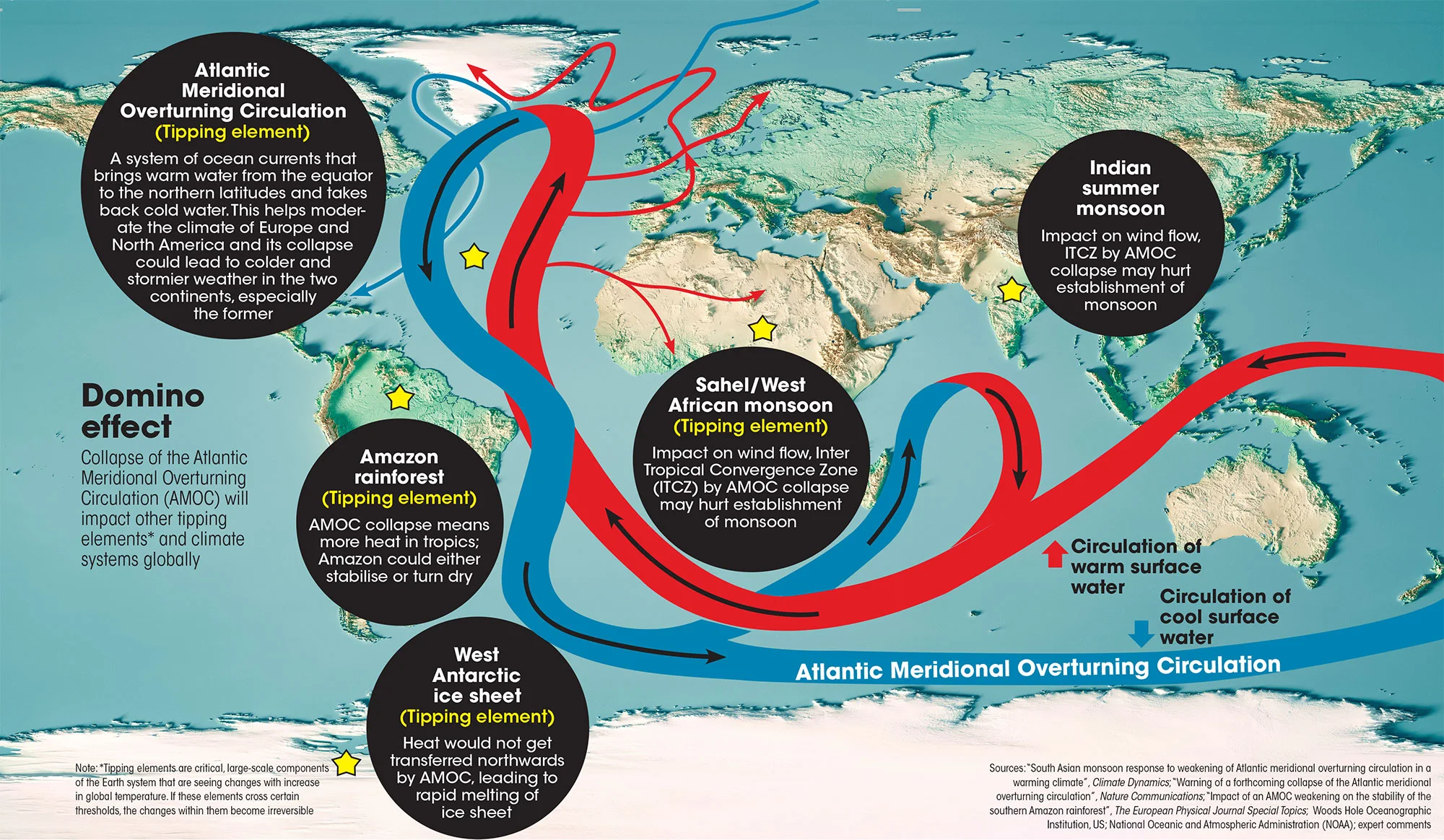New findings suggest that the Atlantic Meridional Overturning Circulation (AMOC), a critical ocean current system shaping global climate and weather patterns, could be at risk of collapsing sooner than previously anticipated. Scientists from the University of Copenhagen, Denmark, in a paper published on July 25, 2023, warn that the AMOC may cease to function between 2025 and 2095, primarily due to the impact of human-caused emissions. They predict a collapse as early as the 2050s, with a 95% confidence level, based on current emission rates, as reported in Nature Communications.
The AMOC's significance lies in its role in moderating Europe and North America's climates and influencing Equatorial temperatures. Its potential collapse could mark the first breach of the 16 identified climate tipping elements, large-scale systems crucial for the planet's climate and ecology. These elements, including the AMOC, are susceptible to irreversible changes if global temperatures exceed certain thresholds due to greenhouse gas accumulation.
A Slowing Conveyor Belt
The AMOC's mechanism involves transporting warm, salty surface waters from the tropics to the northern Atlantic, where they cool, become denser, and sink, creating a cycle of heat redistribution. However, increased freshwater from Arctic ice melt and higher precipitation is diluting the North Atlantic's salt content, reducing water density. This process, observed over the last few decades, is slowing down the AMOC and could ultimately lead to its collapse.
Recent studies have highlighted significant warning signs in the North Atlantic's Subpolar gyre region, near Greenland, Iceland, and Canada. Historical data reveals that AMOC collapses have been preceded by warming events, similar to the Dansgaard-Oeschger events that signaled the end of ice ages.
Current research indicates that the AMOC has already slowed by approximately 15% in the last few decades, its most sluggish pace in 1,600 years. The system's stability has also been questioned, with suggestions that it may be closer to collapse than previously thought, potentially transitioning to a weaker state in just a few decades.
Climate Ramifications
A collapsed AMOC could trigger widespread cooling in the northern hemisphere and reduced precipitation in regions including Europe, North America, China, and parts of Russia. The untransported heat could remain in the tropics, potentially affecting other critical climate systems such as the Amazon rainforest, West Antarctic ice sheet, and monsoons in West Africa and India.
Contrasting Views and Uncertainties
Despite these warnings, the UN Intergovernmental Panel on Climate Change (IPCC) estimates that a complete AMOC halt is unlikely to occur this century. The 2023 study underscores that earlier assessments might have underestimated the AMOC's vulnerability, citing model biases such as an overestimation of its stability and insufficient representation of key factors like cold deep-water currents and freshwater input from melting Arctic glaciers.
If you want to learn more about the ocean and its impact on our planet's life, we recommend paying attention to the following books.
- Ocean Currents: Physical Drivers in a Changing World
- National Geographic Ocean: A Global Odyssey
- The Atlas of Disappearing Places: Our Coasts and Oceans in the Climate Crisis

When was the last time this happened? Was it around 1200AD?
ReplyDelete